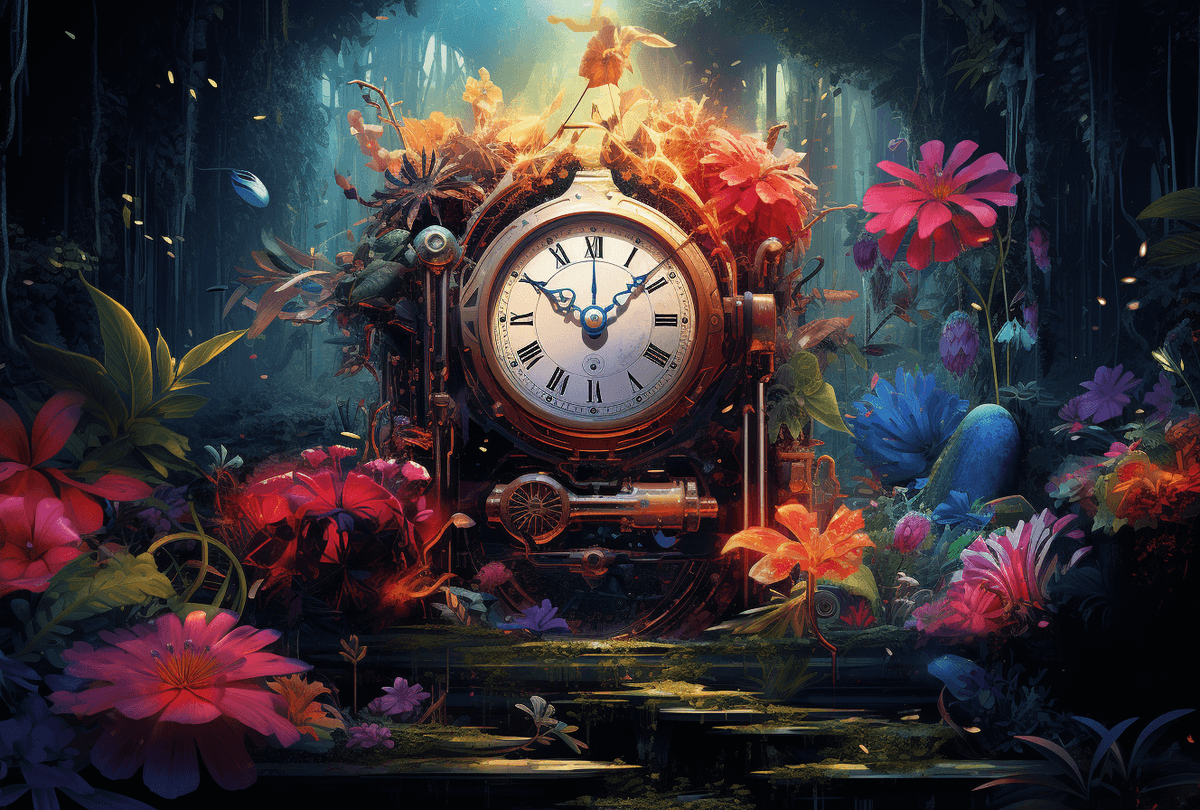Whether it's in the bottom-right-hand corner of your screen or the watch around your wrist, we all keep track of time. Most of our daily routines and activities depend on these devices– yet we rarely take a moment to consider the origin of timekeeping and the various devices humans have used for it throughout its relatively short history.

After noticing the connection between day and night with the position of the sun in the sky, early humans quickly began tracking shadows as a measurement of sunny hours and soon designed obelisks for this purpose. The ancient Egyptians were the first group of people to create obelisks as structures for keeping track of time. Obelisks were large, four-sided, tapering structures that cast a shadow on the ground beneath them. It is, in fact, an Egyptian sundial that shows the earliest evidence of the division of the day into equal parts.
However, as you might have guessed, sundials cannot be used after dark, which led to the development of water clocks. The first alarm clock was created by the famous Greek philosopher Plato using a water clock. The water that passed through the clock flowed into a vessel, and when it reached a certain level, it blew a whistle that woke him up!
Time, as we know it today, is measured based on a system developed by the Sumerians. It is a sexagesimal system, meaning that it is based around the number 60. This number was likely derived from the fact that you could count up to 12 using just the three jointed fingers of your hand. The five fingers of the other hand are used to count in dozens. 5 x 12 = 60. The fact that 60 is the smallest number divisible by 1, 2, 3, 4, 5, and 6 without any remaining fractions makes it even more special, and is one of the main reasons we use it as a system for measuring everything from time to geographical coordinates.
Humans have used many methods to keep track of time, ranging from Stonehenge — which some believe to be the most monumental of the earliest sundials — to water clocks and, later, mechanical watches. The first wristwatch was made for a woman, Countess Koscowicz of Hungary, by Swiss watch manufacturer Patek Philippe in 1868, according to the Guinness World Records. Even at the dawn of the 20th century, no self-respecting man would wear a wristwatch. They were considered women's fashion wear right up to World War I, when soldiers began wearing wristwatches on the battlefield. This shift made it socially acceptable and popular for men to wear wristwatches in public.
The first mechanical clocks had no faces or hands. Instead, they struck a bell every hour. They were followed by clocks with only an hour hand, and later the minute hand was added by Jost Burgi in 1577 for an astronomer who wanted a more accurate clock for stargazing. The first pendulum clocks, invented by Christiaan Huygens in 1656, were among the more accurate timekeepers of the era. They erred by roughly one minute per day, a significant improvement over the previous generation of clocks, which erred by almost 15 minutes per day.
This loss of time became much more apparent and dangerous at sea, where accurate timekeeping was essential for sailors to calculate their exact position. Every minute lost by a clock led to a navigational error of 15 miles, causing the deaths of large numbers of sailors and many missing ships. The problem became so significant that the British Parliament offered a Longitude Prize of £20,000 to anyone who could invent a clock accurate enough for use in sea navigation.
Over time, clocks have become more accurate, with developments such as quartz clocks, created at Bell Telephone Laboratories in 1972. These clocks used the frequency of a vibrating quartz crystal in an electrical current to keep track of time accurately. The first atomic clock, created in 1955, was accurate to one second in 1.4 million years. It used caesium instead of quartz crystals. A similar yet more complex atomic clock keeps the record of standard time for Britain and is locked deep within the National Physical Laboratory (NPL). It should be noted that newer optical clocks with strontium or ytterbium are even more accurate than caesium clocks.
A clock in Bristol has two minute hands! One shows the local time, and the second one shows ‘Railway Time,’ which was created to standardize the time across the entire railway network. This standardization was necessary because people started missing their trains due to time differences across regions.
So, do you know what time it is?